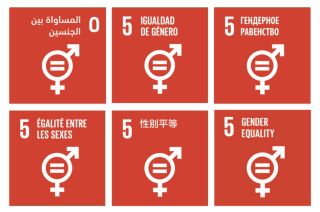
www.buildingsandcities.org/insights/commentaries/modern-cities-collapse.html
Can Modern Cities Learn from the Collapse of Pre-Modern Cities?

Is managed retreat or abandonment an appropriate alternative if investment in building resilience is no longer possible?
When thinking about the future of our cities in the context of the ongoing climate crisis, what insights arise from the collapse and abandonment of pre-modern cities? Dan Penny (University of Sydney) considers what lessons these historical events have for modern societies, for our policies and planning.
These questions have come into sharp focus in recent decades when grappling with the increasing destabilisation of the global environment. Climate change represents a pervasive challenge to contemporary urban societies, and it well understood that climate impacts are felt disproportionately in urban environments (Dobman et al. 2022). The design and material of our cities not only makes enduring more frequent and extreme heat waves more difficult, but they can have severe health impacts. A recent study found that urban extreme heat exposure now affects 1.7 billion people globally (Tuholske et al. 2021). The World Health Organisation claims that 166,000 people died due to heat exposure in the decade to 2017 (Wallemacq et al. 2018). The European heatwave of 2022 alone claimed more than an estimated 62,000 lives (Ballester et al. 2023).
The material form and design of urban environments have important chronic consequences for the long-term stability of cities (Graham 2010). Complex urban infrastructural networks that provide power, water, sanitation, data, transport and other essential goods and services are particularly exposed to climate stress merely because of their scale and complexity. In particular, tight interdependencies between individual components within a complex infrastructural system, and between complex infrastructural systems, can result in a systemic vulnerability to disruption, such that even small perturbations within the system can 'cascade' to create a much larger system failure. Structural vulnerabilities such as these in complex systems are well recognised and understood in theoretical and practical terms (Zimmerman 2001; Little 2002), and addressing these vulnerabilities by enabling 'climate-resilient infrastructures' is a key area of concern for government, inter-governmental and non-governmental agencies world-wide (Vallejo & Mullan 2017).
Increasingly, scholars and practitioners are paying more attention to instances of urban collapse in the pre-modern world to diagnose what generic properties long-term resilience to climate stress has, and to map a likely trajectory for modern urban environments in the face of climate instability (Smith 2023; Chase et al. 2023; Allen et al. 2022; Demarest & Victor 2022; Coningham & Lucero 2021).
What has happened before?
Angkor, the capital district of pre-modern Cambodia, is arguably the best example of the tension between urban form and the dynamical nature of climatic instability. From the 9th to the 14th century of the Common Era (CE) Angkor was the locus of power for an empire that grew to incorporate most of mainland Southeast Asia. During that time, urban infrastructure nucleated around a series of religious and administrative centres established by successive kings and royal houses. That polynuclear urban form coalesced into a kind of pre-modern conurbation, with a dense urban 'epicentre' surrounded by a sprawling low-density settlement that stretched over more than 1000 km2 and supported nearly 1 million people (Klassen et al. 2021.). By the end of the 11th century the landscape of Angkor was effectively 'saturated' with urban material (Groslier 1979, p. 182). Over the next three hundred years urban growth and royal monumentalism at Angkor would focus inward.
A consequence of this 'densification' was the creation of complex infrastructural networks. The most important of these was a massive and complex network of canals, earthen dykes, dams and reservoirs used to capture, store and distribute surface waters for urban and agricultural users. This hydraulic network was an important adaptation to the markedly seasonal climate of mainland Southeast Asia, where seasonal water deficits and surpluses are common.
The critical test of this system came in the mid 14th century CE when a grinding twenty-year drought settled over mainland Southeast Asia immediately followed by some of the wettest years of the past millennium (Buckley et al. 2010). The cumulative shock of these extreme weather events was sufficient to push Angkor's hydraulic network into an unstable behavioural domain in which damage to parts of the system cascaded throughout the network, shattering or 'islanding' the network and fatally disrupting its function (Penny et al. 2018). The network was never repaired, likely due to the progressive shift in power away from Angkor toward smaller and more trade-exposed urban centres on the Mekong River delta (Penny & Beach 2021; Penny et al. 2019). In 1431 CE Angkor was briefly occupied by a rival polity from Ayutthaya in modern Thailand, though the city was never completely abandoned by the Khmer.
The critical lesson here is that networked infrastructural systems, even those designed to help ameliorate climate variability, can develop over time into inflexible and interdependent systems that preclude adaptive responses and may be vulnerable to catastrophic failure. Vulnerability to climate stress, therefore, increased as an unintended by-product of urbanisation. Angkor was built into a state of precariousness and vulnerability due to the size and complexity of its infrastructural networks. Its fate serves as a warning that complexity that emerges iteratively over time will also increase the vulnerability of our infrastructure, even as climate becomes more unstable and less predictable.
The key is to develop modularity and redundancy into critical infrastructural networks, to make them flexible and deformable while maintaining function across the network (see, for example, Anderson et al. 2022). Governance structures and practices, too, must become more adaptable, flexible and modular. Planning and response at the local level, in particular, through local government and community organisations are critical in achieving the necessary speed, granularity and modularity of response to extreme weather events and infrastructural failure brought about by climate stress (Tyler & Moench 2012).
All of this is more easily said than done. Existing physical and governance structures can be difficult to retrofit. Under such circumstances, the attraction of a planned abandonment becomes clear.
Urban abandonment in modern history
A shift in the locus of state power from one settlement to another as a response to environmental stress is not an unusual event, nor is it exclusively an historic one. Modern history, in fact, is peppered with similar examples of power and populations moving away from 'old' cities that have become compromised by changing environmental circumstances and can't be readily adapted to become more resilient. Belize City was the capital of Belize (formerly British Honduras) until 1970 when it was moved to the new city of Belmopan further inland, ostensibly in response to the threat of tropical cyclones. Cyclone Hattie, which virtually destroyed the capital in October 1961, appears to have been the catalyst for the move, but it was much about refashioning a post-colonial and independent Belizean state.
A contemporary example is the ongoing movement of the Indonesian capital from its traditional location in Jakarta on the island of Java to the new 'forest city' of Nusantara in East Kalimantan. This move is driven in part by urban infrastructure that, under the groaning weight of more than 10 million people, has become unworkably tangled. In addition, rising sea levels as a result of anthropogenic climate change, rapid land subsidence as a result of unsustainable ground water extraction, and exposure to natural hazards, have provided an overwhelming environmental 'push' for the Indonesian government. Added to this is the political and economic motivation for centralising power in the middle of the Indonesian archipelago, providing strategic benefits in terms of proximity to the western Pacific Ocean and the South China Sea.
What can we do differently?
Angkor might be seen as part of a long tradition of urban transformation, where social and economic 'pull factors' coincide with environmental and infrastructural 'push factors' to stimulate fundamental change. Partial or even complete 'abandonment' has always been part of the adaptive toolkit when confronting systemic change in urban environments (McLeman 2011). It is perhaps time for policy makers to recognise abandonment as a phenomenon of modern urbanism (Dewar & Thomas 2012) and move beyond the pejorative 'collapse' trope, particularly when confronting the probable need for planned abandonment of coastal cities in the future (Reimann et al. 2023).
The lessons from the past may resonate strongly with us but operationalising them in the modern world is challenging. Leadership by government is critical in setting policy frameworks, but the messy praxis of adaptation often occurs at the local level, both in planning for future shock and in responding to specific events (Tyler & Moench 2012). Social resilience can occur only if it is not impeded by unworkable physical networks, so infrastructure too must become more modular, ductile, and its management more adaptive. Physical and social resilience to climate stress is now thoroughly mainstreamed in academic and policy domains, though real gains in resilience to climate stress are much harder to identify and the analytical focus has been dangerously dominated by developed countries (Nalau & Verrall 2021), despite the 'mega-urbanism' that increasingly characterises the developing world.
Inevitably, cities will become harder to live in as climate stress becomes more acute. The work to create resilient infrastructure is daunting indeed, but these are challenges we must confront as others have done before us.
References
Allen, K.J., Reide, F., Gouramanis, C., Keenan, B., Stoffel, M., Hu, A. & Ionita, M. (2022). Coupled insights from the palaeoenvironmental, historical and archaeological archives to support social-ecological resilience and the sustainable development goals. Environmental Research Letters, 17(5), 055011.
Andersson, E., Grimm, N.B., Lewis, J.A., Redman, C.L., Barthel, S., Colding, J. & Elmqvist, T. (2022). Urban climate resilience through hybrid infrastructure. Current Opinion in Environmental Sustainability, 55, 101158.
Ballester, J., Quijal-Zamorano, M., Méndez Turrubiates, R.F., Pegenaute, F., Herrmann, F.R., Robine, J.M., Basagaña, X., Tonne, C., Antó, J.M. & Achebak, H. (2023). Heat-related mortality in Europe during the summer of 2022. Nature Medicine, 29(7), 1857-1866.
Buckley, B.M., Anchukaitis, K.J., Penny, D., Fletcher, R., Cook, E.R., Sano, M., Nam, L.C., Wichienkeeo, A., Minh, T.T. and Hong, T.M. (2010). Climate as a contributing factor in the demise of Angkor, Cambodia. Proceedings of the National Academy of Sciences, 107(15), 6748-6752.
Chase, D.Z., Lobo, J., Feinman, G.M., Carballo, D.M., Chase, A.F., Chase, A.S., Hutson, S.R., Ossa, A., Canuto, M., Stanton, T.W. and Gorenflo, L.J. (2023). Mesoamerican urbanism revisited: Environmental change, adaptation, resilience, persistence, and collapse. Proceedings of the National Academy of Sciences, 120(31), p.e2211558120.
Coningham, R. & Lucero, L.J. (2021). Urban infrastructure, climate change, disaster and risk: lessons from the past for the future. Journal of the British Academy, 9(s8), 79-114.
Demarest, A.A. & Victor, B. (2022). Constructing policy to confront collapse: Ancient experience and modern risk. Academy of Management Perspectives, 36(2), 768-800.
Dewar, M. & Thomas, J.M. eds. (2012). The City after Abandonment. University of Pennsylvania Press.
Dodman, D., Hayward, B., Pelling, M., Castan Broto, V., Chow, W., Chu, E., Dawson, R., Khirfan, L., McPhearson, T., Prakash, A.. Zheng, Y. & Ziervogel, G. (2022). Cities, Settlements and Key Infrastructure. In: Climate Change 2022: Impacts, Adaptation and Vulnerability. Contribution of Working Group II to the Sixth Assessment Report of the Intergovernmental Panel on Climate Change [H.-O. Pörtner, D.C. Roberts, M. Tignor, E.S. Poloczanska, K. Mintenbeck, A. Alegría, M. Craig, S. Langsdorf, S. Löschke, V. Möller, A. Okem, B. Rama (eds.)]. Cambridge and New York: Cambridge University Press. pp. 907-1040, doi:10.1017/9781009325844.008.
Graham, S. (2010) When Infrastructures Fail. In Graham, S. (ed.) Disrupted Cities: When Infrastructures Fail. Routledge.
Groslier, B.P. (1979). La cité hydraulique angkorienne: exploitation ou surexploitation du sol?. Bulletin de l'Ecole française d'Extrême-Orient, 66, pp.161-202.
Klassen, S., Carter, A.K., Evans, D.H., Ortman, S., Stark, M.T., Loyless, A.A., Polkinghorne, M., Heng, P., Hill, M., Wijker, P. & Niles-Weed, J. (2021). Diachronic modeling of the population within the medieval Greater Angkor Region settlement complex. Science Advances, 7(19), p.eabf8441.
Little, R.G. (2002). Controlling cascading failure: Understanding the vulnerabilities of interconnected infrastructures. Journal of Urban Technology, 9:1, 109 - 123
McLeman, R.A. (2011). Settlement abandonment in the context of global environmental change. Global Environmental Change, 21, S108-S120.
Nalau, J. & Verrall, B. (2021). Mapping the evolution and current trends in climate change adaptation science. Climate Risk Management, 32, 100290.
Penny, D. & Beach, T.P. (2021). Historical socioecological transformations in the global tropics as an Anthropocene analogue. Proceedings of the National Academy of Sciences, 118(40), p.e2022211118.
Penny, D., Hall, T., Evans, D. & Polkinghorne, M. (2019). Geoarchaeological evidence from Angkor, Cambodia, reveals a gradual decline rather than a catastrophic 15th-century collapse. Proceedings of the National Academy of Sciences, 116(11), 4871-4876.
Penny, D., Zachreson, C., Fletcher, R., Lau, D., Lizier, J.T., Fischer, N., Evans, D., Pottier, C. & Prokopenko, M. (2018). The demise of Angkor: Systemic vulnerability of urban infrastructure to climatic variations. Science Advances, 4(10), eaau4029.
Reimann, L., Vafeidis, A.T. & Honsel, L.E. (2023). Population development as a driver of coastal risk: current trends and future pathways. Cambridge Prisms: Coastal Futures, 1, e14.
Smith, M.E. (2023). How can research on past urban adaptations be made useful for sustainability science?. Global Sustainability, 6, e4.
Tuholske, C., Caylor, K., Funk, C., Verdin, A., Sweeney, S., Grace, K., Peterson, P. & Evans, T. (2021). Global urban population exposure to extreme heat. Proceedings of the National Academy of Sciences, 118(41), p.e2024792118.
Tyler, S. & Moench, M. (2012). A framework for urban climate resilience. Climate and development, 4(4), 311-326.
Vallejo, L. & Mullan, M. (2017). Climate-resilient infrastructure: Getting the policies right. OECD Environment Working Papers, No. 121. Paris: OECD Publishing.
Wallemacq, P., Below, R. & McClean, D. (2018). Economic Losses, Poverty & Disasters: 1998-2017. United Nations Office for Disaster Risk Reduction.
Zimmerman, R. (2001) Social implications of infrastructure network interactions. Journal of Urban Technology, 8: 3, 97-119.
Latest Peer-Reviewed Journal Content
A living lab approach to co-designing climate adaptation strategies
M K Barati & S Bankaru-Swamy
Mediation roles and ecologies within resilience-focused urban living labs
N Antaki, D Petrescu, M Schalk, E Brandao, D Calciu & V Marin
Negotiating expertise in Nepal’s post-earthquake disaster reconstruction
K Rankin, M Suji, B Pandey, J Baniya, D V Hirslund, B Limbu, N Rawal & S Shneiderman
Designing for pro-environmental behaviour change: the aspiration–reality gap
J Simpson & J Uttley
Lifetimes of demolished buildings in US and European cities
J Berglund-Brown, I Dobie, J Hewitt, C De Wolf & J Ochsendorf
Expanding the framework of urban living labs using grassroots methods
T Ahmed, I Delsante & L Migliavacca
Youth engagement in urban living labs: tools, methods and pedagogies
N Charalambous, C Panayi, C Mady, T Augustinčić & D Berc
Co-creating urban transformation: a stakeholder analysis for Germany’s heat transition
P Heger, C Bieber, M Hendawy & A Shooshtari
Placemaking living lab: creating resilient social and spatial infrastructures
M Dodd, N Madabhushi & R Lees
Church pipe organs: historical tuning records as indoor environmental evidence
B Bingley, A Knight & Y Xing
A framework for 1.5°C-aligned GHG budgets in architecture
G Betti, I Spaar, D Bachmann, A Jerosch-Herold, E Kühner, R Yang, K Avhad & S Sinning
Net zero retrofit of the building stock [editorial]
D Godoy-Shimizu & P Steadman
Co-learning in living labs: nurturing civic agency and resilience
A Belfield
The importance of multi-roles and code-switching in living labs
H Noller & A Tarik
Researchers’ shifting roles in living labs for knowledge co-production
C-C Dobre & G Faldi
Increasing civic resilience in urban living labs: city authorities’ roles
E Alatalo, M Laine & M Kyrönviita
Co-curation as civic practice in community engagement
Z Li, M Sunikka-Blank, R Purohit & F Samuel
Preserving buildings: emission reductions from circular economy strategies in Austria
N Alaux, V Kulmer, J Vogel & A Passer
Urban living labs: relationality between institutions and local circularity
P Palo, M Adelfio, J Lundin & E Brandão
Living labs: epistemic modelling, temporariness and land value
J Clossick, T Khonsari & U Steven
Co-creating interventions to prevent mosquito-borne disease transmission in hospitals
O Sloan Wood, E Lupenza, D M Agnello, J B Knudsen, M Msellem, K L Schiøler & F Saleh
Circularity at the neighbourhood scale: co-creative living lab lessons
J Honsa, A Versele, T Van de Kerckhove & C Piccardo
Positive energy districts and energy communities: how living labs create value
E Malakhatka, O Shafqat, A Sandoff & L Thuvander
Built environment governance and professionalism: the end of laissez-faire (again)
S Foxell
Co-creating justice in housing energy transitions through energy living labs
D Ricci, C Leiwakabessy, S van Wieringen, P de Koning & T Konstantinou
HVAC characterisation of existing Canadian buildings for decarbonisation retrofit identification
J Adebisi & J J McArthur
Simulation and the building performance gap [editorial]
M Donn
Developing criteria for effective building-sector commitments in nationally determined contributions
P Graham, K McFarlane & M Taheri
Join Our Community

The most important part of any journal is our people – readers, authors, reviewers, editorial board members and editors. You are cordially invited to join our community by joining our mailing list. We send out occasional emails about the journal – calls for papers, special issues, events and more.
We will not share your email with third parties. Read more



Latest Commentaries
COP30 Report
Matti Kuittinen (Aalto University) reflects on his experience of attending the 2025 UN Conference of the Parties in Belém, Brazil. The roadmaps and commitments failed to deliver the objectives of the 2025 Paris Agreement. However, 2 countries - Japan and Senegal - announced they are creating roadmaps to decarbonise their buildings. An international group of government ministers put housing on the agenda - specifying the need for reduced carbon and energy use along with affordability, quality and climate resilience.
Building-Related Research: New Context, New Challenges
Raymond J. Cole (University of British Columbia) reflects on the key challenges raised in the 34 commissioned essays for Buildings & Cities 5th anniversary. Not only are key research issues identified, but the consequences of changing contexts for conducting research and tailoring its influence on society are highlighted as key areas of action.